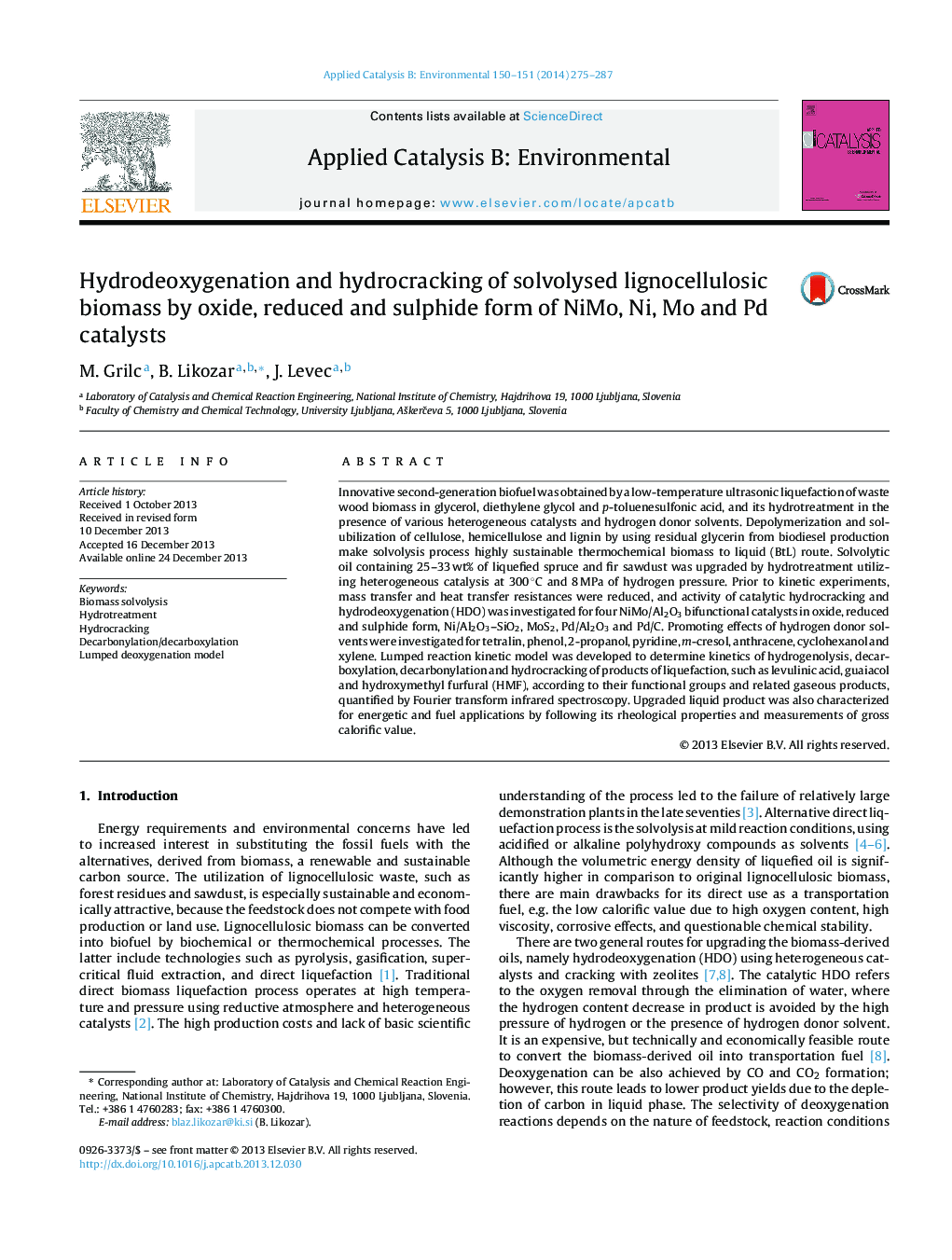| کد مقاله | کد نشریه | سال انتشار | مقاله انگلیسی | نسخه تمام متن |
|---|---|---|---|---|
| 45932 | 46427 | 2014 | 13 صفحه PDF | دانلود رایگان |

• Liquefaction of waste lignocellulosic biomass with glycerol at low temperature.
• Catalytic hydrogenation, hydrodeoxygenation and hydrocracking of solvolytic oil.
• Catalysis over transition (Ni, Mo) and noble metals (Pd) on different supports.
• Comparison of bifunctional NiMo/Al2O3 catalysts in oxide, reduced and sulphide form.
• Proposal of reaction mechanism, chemical kinetics and mass transfer considerations.
Innovative second-generation biofuel was obtained by a low-temperature ultrasonic liquefaction of waste wood biomass in glycerol, diethylene glycol and p-toluenesulfonic acid, and its hydrotreatment in the presence of various heterogeneous catalysts and hydrogen donor solvents. Depolymerization and solubilization of cellulose, hemicellulose and lignin by using residual glycerin from biodiesel production make solvolysis process highly sustainable thermochemical biomass to liquid (BtL) route. Solvolytic oil containing 25–33 wt% of liquefied spruce and fir sawdust was upgraded by hydrotreatment utilizing heterogeneous catalysis at 300 °C and 8 MPa of hydrogen pressure. Prior to kinetic experiments, mass transfer and heat transfer resistances were reduced, and activity of catalytic hydrocracking and hydrodeoxygenation (HDO) was investigated for four NiMo/Al2O3 bifunctional catalysts in oxide, reduced and sulphide form, Ni/Al2O3–SiO2, MoS2, Pd/Al2O3 and Pd/C. Promoting effects of hydrogen donor solvents were investigated for tetralin, phenol, 2-propanol, pyridine, m-cresol, anthracene, cyclohexanol and xylene. Lumped reaction kinetic model was developed to determine kinetics of hydrogenolysis, decarboxylation, decarbonylation and hydrocracking of products of liquefaction, such as levulinic acid, guaiacol and hydroxymethyl furfural (HMF), according to their functional groups and related gaseous products, quantified by Fourier transform infrared spectroscopy. Upgraded liquid product was also characterized for energetic and fuel applications by following its rheological properties and measurements of gross calorific value.
Figure optionsDownload as PowerPoint slide
Journal: Applied Catalysis B: Environmental - Volumes 150–151, 5 May 2014, Pages 275–287